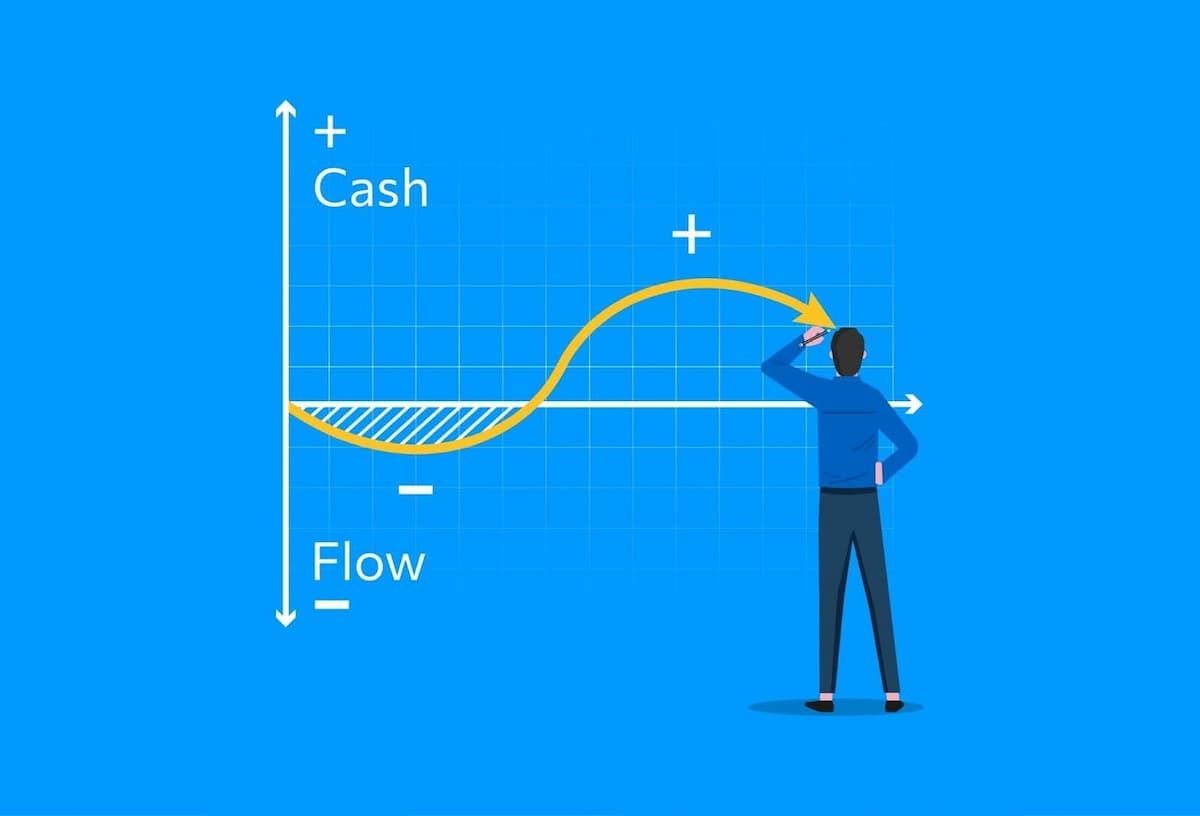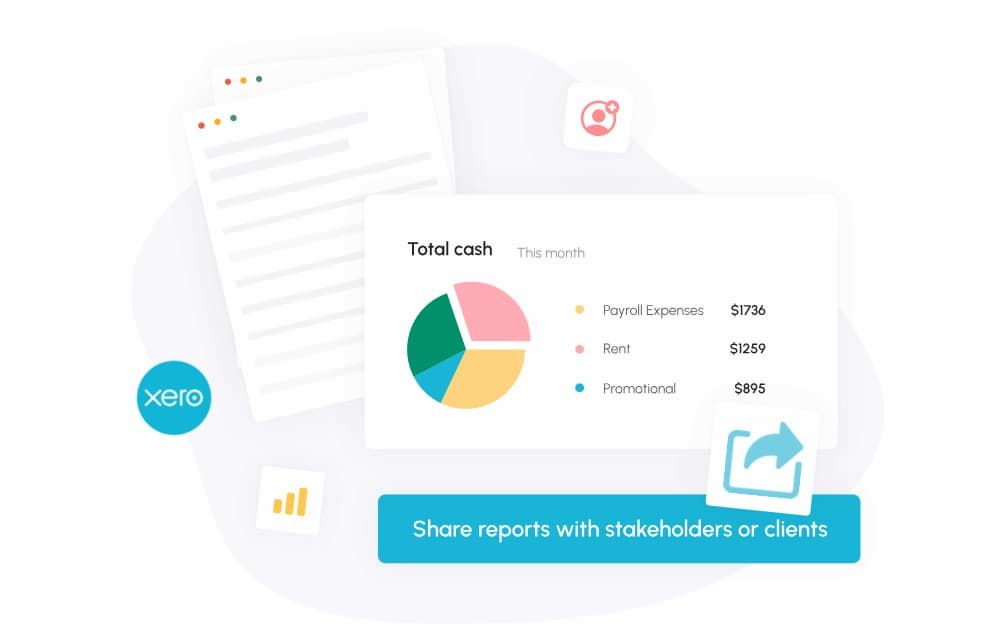Indirect Method Cash Flow
Indirect Method Cash Flow Explained: Formula, Steps & Tips

The cash flow statement indirect method is the most common way to report operating cash flow, especially among startups, small businesses, and SaaS companies. By converting net income from accrual accounting to actual cash movement, this method reveals a business’s absolute liquidity position.
Accurate cash flow statements help support decision-making and early risk identification. This article explains the process, why many choose the indirect method, and provides guidance on how to prepare these statements efficiently.
What Is the Indirect Method of Cash Flow?
What is the indirect method of cash flows? It’s an accounting approach that converts accrual-based net income into operating cash flow. Unlike the income statement, which tracks revenue and expenses when they’re earned or incurred, this method highlights whether those activities have actually resulted in a movement of money yet.
A profitable company can still face cash flow issues, especially if customers delay payments. The indirect method adjusts for these, providing a clearer picture of cash generated from operations.
Two primary types of adjustments are made:
- Non-cash transactions that affect profit but not liquidity
- Working capital movements that determine how much cash is available
These adjustments link profit on the income statement to actual cash activity.
Direct vs Indirect Method - Major Differences
The difference between the direct vs indirect methods lies in the level of input detail and the perspective they offer. Both methods calculate the same net cash from operations, but each arrives at the result differently.
Presentation Style
The indirect method of cash flow statement format begins with net income, then lists adjustments for non-cash and working capital items:
- Adds back non-cash expenses
- Adjusts for gains/losses from investing/financing
- Adjusts for changes in current assets and liabilities
On the other hand, the direct method lists actual cash receipts and payments. It shows lines such as cash received from customers and cash paid to suppliers and employees. For most businesses, the indirect method is more straightforward to prepare, since it uses figures already found in standard accounting systems.
Treatment Of Non‑cash Adjustments
The indirect method explicitly corrects net income by reversing non-cash items, which don’t affect liquidity. For instance:
- Add back: Depreciation, amortization, bad debt expenses
- Subtract: Gains from asset sales, deferred tax benefits
These items influence profit but not cash, and adjusting for them ensures clarity and accuracy. The direct method doesn’t show these adjustments in the operating section. They are typically listed in disclosures or notes instead.
Reconciliation To Accrual Accounting
Since most financial systems use accrual accounting, the indirect method of cash flow aligns well with financial reporting systems. It connects the profit reported on the income statement with the cash generated, offering insights into timing mismatches and liquidity positioning.
Plan Your Cash Flow Like a Pro
Get StartedThe Formula for the Indirect Method Explained
To understand how to calculate the cash flow statement indirect method, let’s look at the basic formula first.
The cash flow indirect method formula is:
Operating Cash Flow = Net Income + Non-Cash Expenses ± Changes in Working Capital ± Other Adjustments
A typical presentation looks like this:
Net Income
+ Non-Cash Adjustments:
- Depreciation & Amortization
- Stock-Based Compensation
- Deferred Taxes
- Impairment or Provision Expenses
± Changes in Working Capital:
- Accounts Receivable
- Accounts Payable
- Inventory
- Other Current Assets & Liabilities
= Net Cash from Operating Activities
Each adjustment either increases or decreases your starting net income figure, yielding the actual operational cash position.
- If receivables increase, cash is tied up even though sales are strong.
- If payables increase, cash stays in the business longer.
- If depreciation rises, the reported profit looks smaller than the actual cash position.
This shows that profitability and liquidity aren’t identical. For decision-makers, understanding this distinction helps with expense planning, funding forecasts, and cash availability.
Step-by-Step Construction of Indirect Cash Flow

Businessman drawing cash flow graph | Diki Prayogo | Shutterstock
Let’s walk through a practical example of the cash flow statement indirect method construction.
Operating Activities Section
Start with net income, then make the adjustments that convert accounting profit into usable cash. Adjust for:
- Non-cash expenses (add back): depreciation, amortization, stock-based comp
- Gains/losses (reverse): sale of assets, foreign exchange
Update for changes in working capital by subtracting increases in receivables and adding increases in payables. These adjustments reveal operating cash flow, which reflects the actual liquidity generated from core business activity.
For instance, a SaaS company with growing receivables may look profitable on paper, but the indirect cash flow reveals whether enough cash is available to cover payroll this month.
Investing And Financing Flows
Investing flows record how you deploy or recover capital, like buying new equipment, expanding into a warehouse, or selling old assets.
Financing flows show how money moves between the company and its lenders or shareholders. This includes taking loans, issuing shares, repaying debt, or paying dividends.
In most small business cash flow statements, these areas indicate why the bank balance fluctuates sharply, even when operations are steady. A new loan inflow, or a single equipment purchase, can outweigh a quarter of operating profit.
Final Reconciliation To Closing Cash
The final step is reconciliation. Add net cash from operations, investing, and financing to the opening balance. The result must equal the ending balance. If not, recheck working capital adjustments and asset entries to ensure accuracy. This reconciliation builds confidence in financial reporting for managers, lenders, and investors.
Pros and Cons of the Indirect Method
The indirect method cash flow approach is widely used, but its strengths and weaknesses become apparent differently depending on the business size and goals.
| Factor | Pros | Cons |
|---|---|---|
| Ease of preparation | Utilizes data already in financial statements, making it quick to prepare.. | Doesn’t show detailed inflows and outflows. |
| Profit vs cash view | Explains why profit and cash differ, useful for investors. | Hides the timing of receipts and payments. |
| Working capital | Shows how receivables, payables, and inventory affect cash. | Needs interpretation; not always obvious for operators. |
| Compliance | Accepted under GAAP/IFRS; audit-friendly and trusted by lenders. | It can feel abstract to non-financial staff without explanation. |
| Software integration | Fits well with accounting systems and forecasting tools. | Doesn’t replace short-term planning for payroll or supplier bills. |
For startups and small businesses, the advantages of the indirect method of cash flow often outweigh its shortcomings. It standardizes reporting and keeps auditors and investors satisfied, which is vital when raising capital or applying for credit.
However, this method doesn’t indicate if receivables will arrive late or if an upcoming payment will create a cash shortfall. For this reason, many teams utilize cash flow forecasting tools in conjunction with the indirect method for daily financial control.
Get Data-Driven Insights
Try Financial ForecastingWhen to Use the Indirect Method
The cash flow statement indirect method is most useful when financial reporting needs extend beyond basic bookkeeping. If your records recognize revenue when earned and expenses when incurred, this method translates those figures into actual cash movements.
External stakeholders also rely on this reporting style. Banks often require it when reviewing loan applications. During audits or valuations, clear visibility into working capital changes is essential, and this method highlights those adjustments line by line.
For operators, the benefit is practical. Even small shifts in receivables, payables, or inventory can impact liquidity, despite showing solid net income. By identifying these factors, leaders can better plan for debt payments, payroll, and growth spending.
Companies following GAAP or IFRS, as well as those preparing investor models, typically use this method. It ensures compliance and offers a realistic perspective on cash conversion from profits.
Common Mistakes & How to Avoid Them
Typical errors when using the cash flow statement indirect method often come from misclassification or overlooked adjustments. Here are the mistakes to look out for and how to avoid them:
- Misclassifying non-cash items: Gains or losses from asset sales shouldn’t be in operations. Record under investing and adjust out of net income.
- Overlooking working capital changes: Increases in receivables reduce cash; higher payables increase cash. Track these to avoid misreporting liquidity.
- Mixing financing or investing flows into operations: Loan repayments and equipment purchases should be placed in their own sections. Label transactions clearly.
- Not reconciling opening and closing balances: The beginning cash plus net flows must equal the ending cash. Check against the balance sheet or bank statement.
Following these checks helps teams produce reliable statements for both management and investors.
Tools, Templates & Automation

Forecasting Software | Cash Flow Frog
For smoother reporting, use tools designed for indirect method cash flow management. These offer structured workflows and automation:
- Google Sheets/Excel templates: Flexible for early-stage teams with low transaction volumes, but require careful formula upkeep.
- Cloud-based accounting software: Generates indirect method reports directly from ledgers; ideal for small businesses wanting built-in reporting.
- Cash flow software: Platforms like Cash Flow Frog sync with accounting systems and extend into forecasting, showing how receivables, payables, or hiring affect runway.
Using the cash flow statement format indirect method ensures transparency and accuracy. Regardless of the tool, make sure the adjustments align with your financial statements.
Real‑World Use Cases & Examples

Financial report use cases | Red Vector | Shutterstock
Let’s take a look at typical use cases of the indirect method:
Startup Scenario
A SaaS startup posts a net loss of $120,000. Adding back $30,000 depreciation and subtracting a $50,000 increase in receivables reveals lower-than-expected operating cash flow. This shows that growth alone doesn’t extend the runway and may trigger adjustments to funding.
Small Business Case
An expanding e-commerce store posts higher net income, but liquidity shrinks. The indirect method highlights a $40,000 inventory build-up that absorbed cash. This finding helps owners reconsider their inventory purchasing strategy, especially before seasonal peaks, to avoid straining working capital.
Service Company Example
A consulting firm reports strong profits, but unpaid invoices of $75,000 delay cash. The indirect method makes this visible, prompting improved collection practices. This statement of cash flows indirect method example, surfaces insights missed in the income statement alone.
Best Practices for Accuracy & Transparency
A cash flow statement only builds trust if the numbers are clear and consistent. These best practices help make sure your indirect method reporting stays accurate and useful for both internal teams and external stakeholders:
- Update monthly. Quarterly reporting can hide problems. Monthly updates provide a timely view of your cash.
- Reconcile line by line. Match every adjustment back to its balance sheet or income statement source.
- Check opening and closing cash. Confirm that the figures match your actual bank balances.
- Record your assumptions. Document collection periods, supplier terms, or inventory expectations in your working capital projections.
- Use rolling forecasts. Update forecasts regularly to account for seasonality or unexpected shifts.
Following these practices reduces the risk of errors and ensures everyone shares the same view of the company’s financial health.
Final Thoughts
The cash flow statement indirect method allows businesses to translate accrual-based results into a clear view of actual cash movements. It also helps anticipate funding needs and manage liquidity effectively.
When paired with the right tools for systematic adjustments, companies can ensure accurate cash flow reporting and maintain investor confidence.
Monitor the Cash Flow of Your Small Business
Start Free TrialRelated Terms
FAQ
Looking for more help?
Visit our help center to find answers to your questions about CashFlowFrog.
Trusted by thousands of business owners
Start Free Trial Now